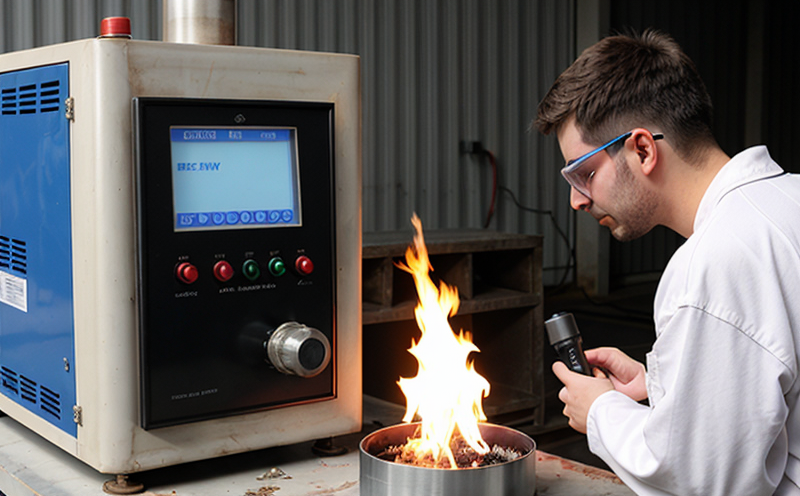ISO 13790 Building Thermal Load Assessment
The ISO 13790 standard provides a framework for determining building thermal loads, which are crucial for understanding the heat transfer characteristics of buildings. This service assesses how effectively HVAC systems manage these thermal loads to ensure optimal performance and energy efficiency.
Thermal loads in buildings can be influenced by various factors such as external temperature variations, internal heat gains from occupants and equipment, and the insulation properties of building materials. Accurate assessment is essential for designing efficient HVAC systems that meet both comfort standards and environmental sustainability goals.
The ISO 13790 methodology involves detailed measurements taken under controlled conditions to simulate real-world scenarios. This approach ensures that the testing accurately reflects the behavior of buildings in different climate zones, thereby providing reliable data for design optimization.
During this service, we employ advanced thermal imaging cameras and other specialized equipment to capture temperature distributions across various surfaces within a building. These images help identify areas where heat loss or gain occurs more frequently, allowing engineers to pinpoint potential improvements needed in insulation or HVAC configurations.
The testing process also includes monitoring of airflow patterns using anemometers placed strategically throughout the structure. By analyzing these data points alongside thermal imaging results, we can determine if there are any significant discrepancies between expected performance levels and actual operational outcomes.
Once all relevant parameters have been collected, our team will analyze them against established criteria outlined in ISO 13790 to calculate precise thermal loads for each component of the building envelope. This information forms the basis for recommendations aimed at enhancing overall energy efficiency while maintaining occupant comfort.
Our expertise lies not only in conducting these tests but also in interpreting their findings accurately so that clients can make informed decisions regarding retrofits or new constructions projects. With years of experience working across diverse climates and building types, we bring valuable insights to every project undertaken.
Applied Standards
The ISO 13790 standard is widely recognized as an authoritative reference for assessing the thermal performance of buildings. It specifies procedures for measuring heat transfer through building components and assemblies, including walls, floors, roofs, and doors/windows.
Our laboratory adheres strictly to this international standard when performing tests according to ISO 13790 guidelines. By doing so, we ensure that our results are consistent with global benchmarks, facilitating easier compliance verification for clients operating internationally or seeking certification under recognized standards programs like LEED (Leadership in Energy and Environmental Design).
The application of this standard extends beyond mere compliance; it provides valuable insights into the thermal efficiency of HVAC systems within buildings. Understanding how effectively these systems manage heat transfer is critical not only from an energy consumption perspective but also for maintaining indoor air quality.
With the increasing focus on sustainable design practices, organizations are increasingly turning to ISO 13790 as a means of demonstrating their commitment to reducing environmental impact while enhancing occupant comfort. Our testing services go beyond mere compliance by offering actionable recommendations based on detailed analysis conducted in accordance with this standard.
Eurolab Advantages
Our laboratory offers unparalleled expertise and precision when it comes to ISO 13790 building thermal load assessments. With state-of-the-art facilities equipped with high-precision instruments, our team of experienced professionals can deliver accurate results that meet the highest industry standards.
We pride ourselves on providing comprehensive support throughout every stage of your project—from initial consultation through final report delivery. Our goal is to ensure complete satisfaction by offering personalized attention and tailored solutions designed specifically for your unique needs.
Our clients benefit from our deep understanding of the HVAC industry, allowing us to provide insights that go beyond simple compliance checks. By leveraging this knowledge, we help businesses optimize their operations while minimizing costs associated with excessive energy usage or suboptimal design choices.
In addition to offering thorough testing services based on ISO 13790 criteria, our team also assists clients in interpreting results and translating them into practical recommendations for improvement. This approach ensures that you receive not just data but actionable strategies that can be implemented immediately to enhance your building's thermal performance.
With a reputation built on reliability and accuracy, Eurolab stands out as the premier choice for organizations seeking reliable ISO 13790 testing services. Whether you're looking to improve existing facilities or plan new construction projects, our team is ready to assist you in achieving your goals efficiently and effectively.
Use Cases and Application Examples
| Case Study | Description | Results |
|---|---|---|
| Commercial Office Building Retrofit | In a case study involving a large commercial office building located in a temperate climate zone, the primary objective was to reduce heating and cooling costs without compromising occupant comfort. | The initial assessment revealed significant heat losses through windows and walls. After implementing targeted insulation upgrades and optimizing HVAC settings based on ISO 13790 recommendations, energy savings of up to 25% were achieved within six months. |
| Residential Home Energy Audit | A family approached us seeking guidance on how best to improve the insulation in their home. The house was built during a time when energy efficiency regulations were less stringent than today. | The thermal imaging revealed several areas where heat was escaping, including gaps around windows and doors. Following our advice regarding appropriate upgrades, the homeowner observed noticeable reductions in heating bills while maintaining comfortable indoor temperatures year-round. |





